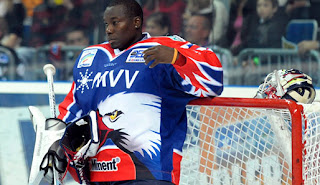A couple of weeks back
I looked at the players the WHA raided from the Central Hockey League in the summer of 1972.
We turn now [finally] to the Western League.
* * * * * *
Pro hockey returned to the Pacific Coast in 1948, a 10-team league stretching from Vancouver and New Westminster in the north to Los Angeles and Fresno in the south. Over the next few years the California cities disappeared and were replaced by Canadian prairie metropoli.
By 54-55 every team in the league was Canadian.
That didn't last though, Regina & Saskatoon were too small, Winnipeg too far. And, new 10,000 to 13,000 seat arenas were looking for tenants all along the west coast. The prairie era ended after the 62-63 season when Edmonton and Calgary withdrew from the league.
* * * * * *
Vancouver had the largest single season WHL average attendance – 9,000+ in the Canuck’s final year in the league.
Folks were getting themselves to the head of the NHL season ticket line.
Here are the Top-10 seasons [Average Attendance]:
69.70 Vancouver Canucks 9,170
67.68 San Diego Gulls 8,662
69.70 San Diego Gulls 8,416
68.69 San Diego Gulls 8,249
66.67 San Diego Gulls 8,105
61.62 Portland Buckaroos 8,076
62.63 Portland Buckaroos 8,022
64.65 Portland Buckaroos 7,775
60.61 Portland Buckaroos 7,577
71.72 San Diego Gulls 7,438
I always thought that San Diego was a crappy place for a WHA franchise; I can now see why others disagreed.
And I still don't understand how the WHA didn't land in Portland.
* * * * *
In the 71-72 season the WHL had 6 teams, with 96 skaters dressing for at least 25 games:
- Prospects, 14%, 22 and Under
- Veterans, 50%, 23 to 31
- Old Timers, 36%, 32 and up
This age breakdown is exactly opposite to that of the CHL.
The WHA signed 17 WHL regulars.
Once again they skimmed the creme.
Of the Veteran forwards, the Top-5 scorers in order were Larry Lund, Fran Huck,Gary Veneruzzo, Ron Buchanan, Andre Hinse.
First, third and fourth signed with the new league [second and fifth followed a year later].
Three of the Top-4 scoring Veteran defensemen also moved - two to Houston, one to Chicago.
Orest Kindrachuk was among the Top-5 in Prospect scoring in 71-72, he went on to play for the NHL's Flyers.
The other 4 all jumped.
Here's the complete list:
| Player Name | Age | Pos. | WHL | WHA | G | A | Pts | PPG |
| Ron Buchanan | 26 | C | 1.16 | Cleveland Crusaders | 37 | 44 | 81 | 1.08 |
| Gary Veneruzzo | 28 | L | 1.19 | Los Angeles Sharks | 43 | 30 | 73 | 0.94 |
| Reg Fleming | 35 | D | 0.86 | Chicago Cougars | 23 | 45 | 68 | 0.91 |
| Larry Lund | 30 | C | 1.45 | Houston Aeros | 21 | 45 | 66 | 0.86 |
| Larry Mavety | 29 | D | 0.85 | Chicago Cougars | 9 | 40 | 49 | 0.73 |
| Phil "Skip" Krake | 27 | C | 0.96 | Cleveland Crusaders | 9 | 10 | 19 | 0.73 |
| Bob Whitlock | 22 | L | 1.22 | Chicago Cougars | 23 | 28 | 51 | 0.68 |
| Frank Hughes | 21 | R | 1.17 | Houston Aeros | 22 | 19 | 41 | 0.53 |
| Dunc McCallum | 31 | D | 0.66 | Houston Aeros | 9 | 20 | 29 | 0.42 |
| Bob Liddington | 22 | L | 0.57 | Chicago Cougars | 20 | 11 | 31 | 0.40 |
| John Hanna | 36 | D | 0.42 | Cleveland Crusaders | 6 | 20 | 26 | 0.39 |
| Ted McCaskill | 34 | C | 0.77 | Los Angeles Sharks | 11 | 11 | 22 | 0.30 |
| Mel Pearson | 33 | C | 0.82 | Minn Fighting Saints | 8 | 12 | 20 | 0.29 |
| Gord Kannegiesser | 25 | D | 0.47 | Houston Aeros | 0 | 10 | 10 | 0.22 |
| Brian Glenwright | 21 | L | 0.63 | Chicago Cougars | 2 | 7 | 9 | 0.18 |
| Ray LaRose | 29 | D | 0.54 | Houston Aeros | 1 | 10 | 11 | 0.16 |
| Larry Cahan | 37 | D | 0.32 | Chicago Cougars | 1 | 10 | 11 | 0.15 |
That's a WHA-E of 64%
The big players in raiding the WHL were the Chicago Cougars with 6 signings, the Houston Aeros signed 5.
The Western League had been hit hard by major league expansion.
It lost several of its larger markets - Vancouver, Los Angelas and the Bay Area.
Plus quality players were now scarcer and dearer.
The advent of the WHA just made things worse, and the League folded two years later.
 1 Win in a shoot-out
1 Win in a shoot-out






